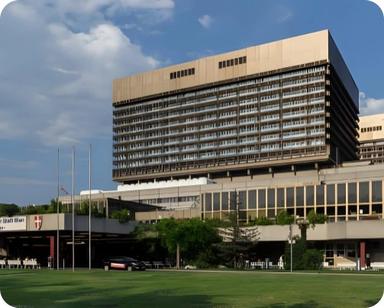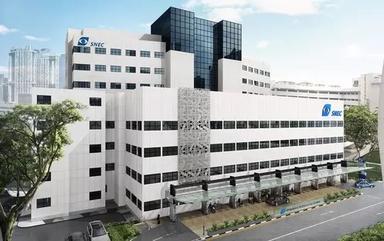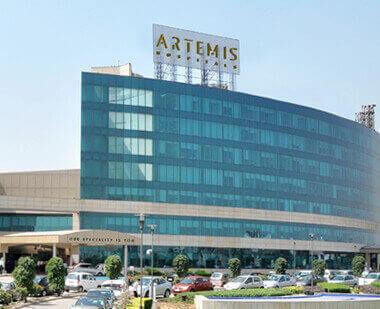الحزم تبدأ من
$5800
هل تحتاج إلى مساعدة في اختيار الحزمة المناسبة لرحلتك الطبية؟
بياناتك الصحية محمية معنا

تحويل الحياة بـ إغلاق ASD عند الأطفال
إغلاق ASD (عيب الحاجز الأذيني) في طب الأطفال هو إجراء طبي يستخدم لتصحيح عيب الحاجز الأذيني ، وهو ثقب في الجدار (الحاجز) بين الغرفتين العلويتين من القلب (الأذين). يمكن أن يسمح هذا الثقب بالدم الغني بالأكسجين بالدم مع الدم الفقير الأكسجين ، مما يسبب تدويرًا مفرطًا للدم في الرئتين وحمل زائد على القلب.
الجوانب الرئيسية لإغلاق ASD:
- تشخبص: غالبًا ما يتم اكتشاف اضطراب طيف التوحد من خلال أعراض مثل ضيق التنفس، أو التعب، أو نفخة القلب، أو عن طريق الصدفة أثناء مخطط صدى القلب لسبب آخر.
- طرق الإغلاق: هناك طريقتان رئيسيتان لإغلاق ASD:
- الإجراء القائم على القسطرة: أسلوب جراحي بسيط حيث يتم إدخال جهاز من خلال قسطرة يتم تمريرها من وريد في الساق إلى القلب لسد الثقب. هذه الطريقة مفضلة بسبب تعافيها الأسرع والحد الأدنى من التندب.
-الإغلاق الجراحي: يتم استخدامه عندما يكون العيب كبيرًا جدًا بحيث لا يمكن اتباع نهج يعتمد على القسطرة أو إذا كانت هناك حاجة إلى إصلاحات قلبية إضافية. يتضمن ذلك جراحة القلب المفتوح تحت التخدير العام ويوفر الوصول المباشر إلى القلب لإصلاحه بالكامل.
التعافي والنتائج:
-الإغلاق القائم على القسطرة: يتضمن عادةً إقامة قصيرة في المستشفى، حيث يعود معظم الأطفال إلى أنشطتهم الطبيعية في غضون أيام قليلة.
- الإغلاق الجراحي: يتطلب فترة تعافي أطول، مع استئناف الأنشطة تدريجيًا مع تعافي الطفل.
كلتا الطريقتين فعالتان للغاية، حيث يعيش غالبية الأطفال حياة طبيعية ونشيطة بعد العملية. تعد رعاية المتابعة المنتظمة ضرورية لمراقبة وظائف القلب وضمان نجاح العلاج على المدى الطويل.
5.0
90% مصنف قيمة مقابل المال
لماذا تختارونا؟
95%
معدل النجاح
2+
إغلاق ASD عند الأطفال الجراحين
0
إغلاق ASD عند الأطفال
3+
المستشفيات في جميع أنحاء العالم
0
الحياة التي تم لمسها
نظرة عامة
إغلاق ASD (عيب الحاجز الأذيني) في طب الأطفال هو إجراء طبي يستخدم لتصحيح عيب الحاجز الأذيني ، وهو ثقب في الجدار (الحاجز) بين الغرفتين العلويتين من القلب (الأذين). يمكن أن يسمح هذا الثقب بالدم الغني بالأكسجين بالدم مع الدم الفقير الأكسجين ، مما يسبب تدويرًا مفرطًا للدم في الرئتين وحمل زائد على القلب.
الجوانب الرئيسية لإغلاق ASD:
- تشخبص: غالبًا ما يتم اكتشاف اضطراب طيف التوحد من خلال أعراض مثل ضيق التنفس، أو التعب، أو نفخة القلب، أو عن طريق الصدفة أثناء مخطط صدى القلب لسبب آخر.
- طرق الإغلاق: هناك طريقتان رئيسيتان لإغلاق ASD:
- الإجراء القائم على القسطرة: أسلوب جراحي بسيط حيث يتم إدخال جهاز من خلال قسطرة يتم تمريرها من وريد في الساق إلى القلب لسد الثقب. هذه الطريقة مفضلة بسبب تعافيها الأسرع والحد الأدنى من التندب.
-الإغلاق الجراحي: يتم استخدامه عندما يكون العيب كبيرًا جدًا بحيث لا يمكن اتباع نهج يعتمد على القسطرة أو إذا كانت هناك حاجة إلى إصلاحات قلبية إضافية. يتضمن ذلك جراحة القلب المفتوح تحت التخدير العام ويوفر الوصول المباشر إلى القلب لإصلاحه بالكامل.
التعافي والنتائج:
-الإغلاق القائم على القسطرة: يتضمن عادةً إقامة قصيرة في المستشفى، حيث يعود معظم الأطفال إلى أنشطتهم الطبيعية في غضون أيام قليلة.
- الإغلاق الجراحي: يتطلب فترة تعافي أطول، مع استئناف الأنشطة تدريجيًا مع تعافي الطفل.
كلتا الطريقتين فعالتان للغاية، حيث يعيش غالبية الأطفال حياة طبيعية ونشيطة بعد العملية. تعد رعاية المتابعة المنتظمة ضرورية لمراقبة وظائف القلب وضمان نجاح العلاج على المدى الطويل.




















